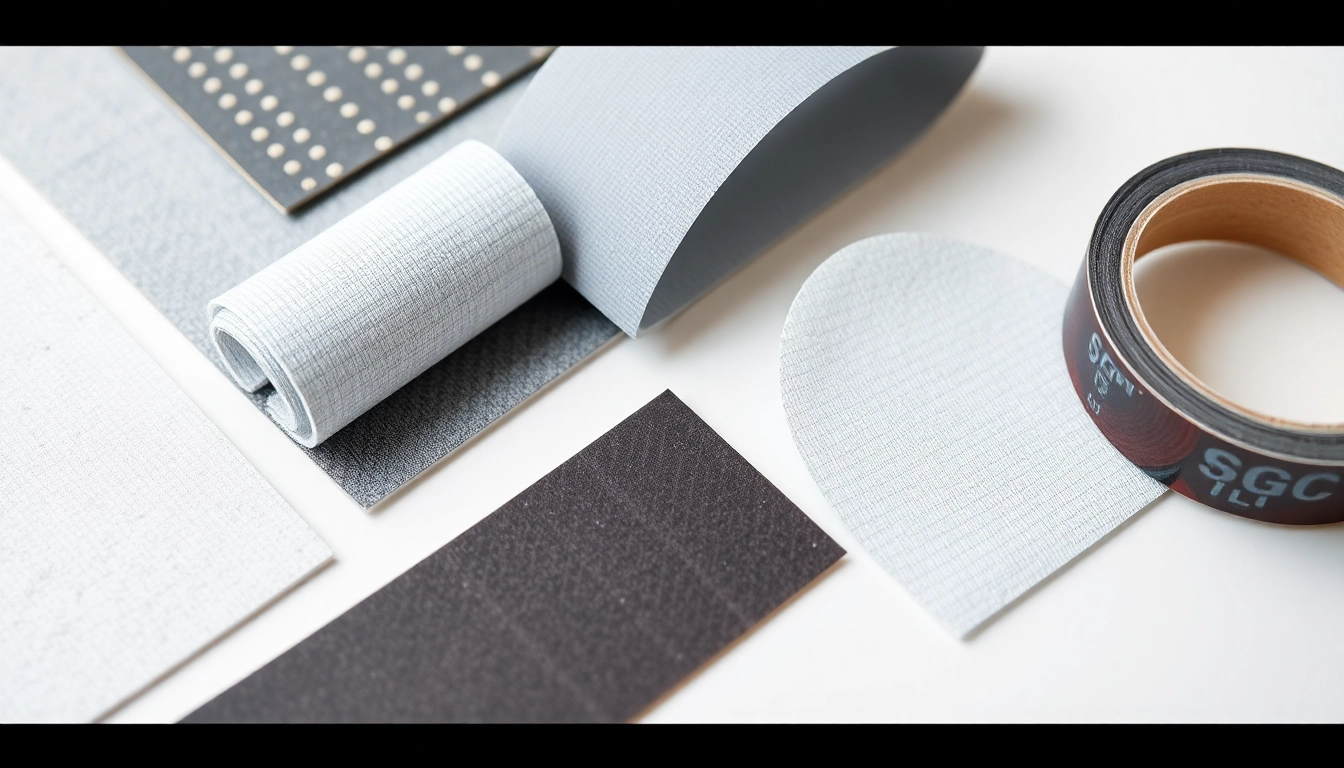Understanding Thermal Management Materials
What Are Thermal Management Materials?
Thermal management materials are essential components in modern electronics, designed to efficiently control and dissipate heat generated by electronic devices. These materials enhance overall system performance and contribute to longevity by minimizing heat-related damage. They encompass a range of products, including thermal interface materials (TIMs), adhesive films, gap fillers, and phase change materials, each tailored to meet specific thermal needs within various applications. In essence, thermal management materials serve to transfer heat from hot components to cooler surfaces, often including heat sinks or ambient air, thereby maintaining optimal operating temperatures.
Types of Thermal Management Materials in Electronics
There is a variety of thermal management materials available, each designed for specific applications and performance requirements:
- Thermal Interface Materials (TIMs): These materials fill microscopic air gaps between two surfaces, improving heat transfer efficiency. Common types include thermal pastes, adhesives, and pads.
- Phase Change Materials (PCMs): These are substances that absorb heat as they change from solid to liquid at specific temperatures, helping to regulate temperature spikes in electronic devices.
- Gap Fillers: Flexible materials that conform to uneven surfaces, promoting better contact between components, typically found in applications where a solid thermal interface is required.
- Thermal Tapes: Adhesive-based solutions that provide excellent thermal conductivity while also securing components without additional bolts or fixtures.
- Heat Sinks and Spreaders: Typically made from metals such as copper or aluminum, these act as passive cooling components by increasing surface area for heat dissipation.
Key Functions of Thermal Management Materials
The primary functions of thermal management materials can be summarized as follows:
- Heat Dissipation: Efficiently transfers heat away from critical components to avoid overheating.
- Thermal Insulation: Helps to protect sensitive elements from external heat sources.
- Mechanical Support: Provides structural integrity to electronic assemblies while reliably maintaining thermal pathways.
- Cost Efficiency: Long-term reductions in repair costs and device failures due to effective thermal management solutions.
Importance of Thermal Management in Electronics
Impact on Device Performance
Effective thermal management is paramount to the reliable performance of electronic devices. Excessive heat can severely impact the functionality, speed, and efficiency of components, leading to thermal throttling. For instance, processors may self-regulate their speed in response to high temperatures, which compromises performance. By utilizing thermal management materials, manufacturers can prevent such issues, ensuring devices operate at optimal temperatures and maximizing performance.
Heat Dissipation and Reliability
Heat dissipation is closely linked to the reliability and lifespan of electronic devices. Failure to manage heat effectively can lead to component degradation, increased likelihood of malfunctions, and ultimately device failure. For example, the lifespan of lithium-ion batteries can be drastically reduced if they are subjected to high temperatures. Advanced thermal management materials help maintain lower operational temperatures, extending the service life of critical components.
Cost Implications of Poor Thermal Management
The financial impact of inadequate thermal management extends beyond immediate repair costs. Companies may face higher warranty claims, customer dissatisfaction, and potential loss of market reputation. Additionally, operation downtime due to equipment failures can be significantly costly. Investing in high-quality thermal management materials is a proactive approach to mitigate these risks and can ultimately lead to more significant savings in terms of maintenance and enhanced product reliability.
Choosing the Right Thermal Management Materials
Factors to Consider When Selecting Materials
When selecting thermal management materials, several factors should be considered:
- Thermal Conductivity: The ability of the material to conduct heat effectively, measured in watts per meter-kelvin (W/mK).
- Mechanical Properties: Considerations such as compliance and durability, especially in dynamic environments where vibration may be an issue.
- Thermal Resistance: Materials with lower thermal resistance facilitate better heat flow and are preferable.
- Chemical Compatibility: Ensuring materials do not degrade in the environment in which they are used, including exposure to oils, solvents, or environmental factors.
- Cost and Availability: Balancing performance needs with budgetary constraints, while ensuring materials are readily available for production.
Comparison of Common Thermal Management Materials
A comparison of commonly used thermal management materials can help in understanding their specific applications:
| Material Type | Thermal Conductivity (W/mK) | Best Use Case |
|---|---|---|
| Thermal Grease | 1 – 5 | High power CPUs, GPUs |
| Thermal Pads | 5 – 10 | General electronics, flat surfaces |
| Phase Change Materials | 10 – 20 | Compact electronic devices, temperature spikes |
| Gap Fillers | 3 – 6 | Uneven surfaces, heavy assemblies |
Best Practices for Material Selection
To ensure optimal performance of thermal management systems, consider the following best practices:
- Conduct Thermal Analysis: Use simulation tools to analyze heat flow and identify critical areas needing thermal management.
- Prototype and Test: Before mass production, prototype different thermal solutions to gauge performance and reliability under operational conditions.
- Maintenance Planning: Consider the long-term upkeep required for the chosen materials, ensuring ease of replacement or repair if necessary.
Applications of Thermal Management Materials
Use Cases in Consumer Electronics
In consumer electronics, thermal management is critical. Products such as smartphones, laptops, and gaming consoles generate significant heat. For example, thermal pads and TIMs are commonly used in these devices to ensure efficient heat transfer from processors to heat sinks. These applications highlight the importance of selecting appropriate materials that maintain performance during high loads.
Industrial Equipment Applications
Industrial settings require robust thermal management solutions due to their demanding operational environments. Engines, machinery, and power electronics often rely on high-performance thermal interface materials to maintain efficiency and prevent operational hazards due to overheating. The durability of materials used in these stakes must withstand vibrations, chemicals, and varying temperatures.
Automotive Industry Thermal Solutions
The automotive industry has seen advancements in thermal management as vehicles become more complex. With the rise of electric vehicles (EVs), effective thermal management for batteries, motors, and power electronics is crucial. Phase change materials, thermal management tapes, and gap fillers are regularly integrated into battery packs and electronic assemblies to ensure heat is effectively dissipated and components are protected.
Future Trends in Thermal Management Materials
Emerging Technologies and Materials
The landscape of thermal management materials is evolving with advancements in technology. Innovations such as graphene and carbon nanotube-based materials are on the horizon, potentially offering superior thermal properties and lightweight solutions. These materials promise increased efficiency in heat dissipation while reducing overall weight in electronic devices.
Advancements in Thermal Interface Materials
Continued R&D is focused on enhancing TIMs, with the aim of improving thermal conductivity, reducing thermal resistance, and increasing durability. New formulations, including those that incorporate nanoparticles, are being explored to boost the performance of traditional thermal pastes and pads.
Sustainability in Thermal Management Solutions
As sustainability becomes a priority across industries, the development of eco-friendly thermal management materials is gaining traction. Bio-based materials and those produced through sustainable processes are being researched to reduce the environmental impact of electronics manufacturing while maintaining performance.









